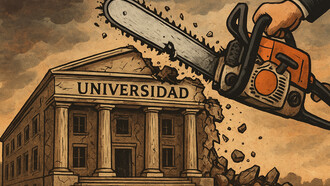The notion of political parties in the non-United States existing along a neat and orderly linear continuum from left to right (or right to left depending on your predilection I suppose) is yet another American fantasy about ourselves, outdated at best and madly simplistic at worst. This paradigm was borrowed centuries ago from the French Revolution, from which our fledgling nation took so many neo-liberal values and Constitutional principles.
In the summer of 1789, members of the French National Assembly met to begin drafting a constitution. The delegates were deeply divided over the issue of how much authority King Louis XVI should have and, as the debate raged, the two main factions each staked out territory in the assembly hall. The anti-royalist revolutionaries seated themselves to the presiding officer’s left, while the more conservative, aristocratic supporters of the monarchy gathered to the right.
The divisions only continued during the 1790s, when newspapers began making reference to the progressive “left” and traditionalist “right” of the French assembly. The distinctions later vanished for several years during the reign of Napoleon Bonaparte, but with the beginning of a constitutional monarchy in 1814, liberal and conservative representatives once again took up their respective posts on the left and right of the legislative chamber. By the mid-19th century, “left” and “right” had entered the French vernacular as shorthand for opposing political ideologies.
France’s “left” and “right” labels filtered out to the rest of the world during the 1800s, but they weren’t common in English-speaking countries until the early 20th century. The terms are now commonly used to describe the opposing ends of an imaginary political spectrum in the U.S.
How accurate and useful a concept is of linear directionality in the 21st century non-United States? Let’s see.
In France and the United States as well, only property owning tax payers could vote, reinforcing ideas that invisibilized everyone else. Where are the citizens who did not own land or pay taxes? In the U.S., where are the Black and other people of color, including the indigenous and conquered peoples? And where are the women?
None of these groups was offered the vote and I maintain that none of them are represented on the left or right of any king. Perhaps we should have a visual representation then of White Patriarchy, where these men are centered and each group is seated to the left or the right of the still ruling class.
By the 21st century and earlier for the multitude of people left out of the Patriarchal Constitution of 1776, activist groups have formed to seek inclusion, so-called “equal rights.” Yet in the roughly 250 years since the writing of these words, none of these groups has succeeded in fully achieving those very rights. We are still far from equal and so just as far from a modern democracy, as we have not even been able to pass an Equal Rights Bill for Women or protect the voting rights for people of color.
Is it even possible for these groups to achieve equity as the system is structured or is it simply a paradoxical goal? That is, can they achieve equity in a left-right, male-male, white-white system or does the spectrum have to morph into a complex network of non-stationary positions and causes that ignore many participants and gloss over important alliances? Are we frozen in place on either side of the king?
For women, the system had quite a surprise up its ubiquitous sleeve. I am certainly not aware of any feminist who anticipated the current turn of events, in which women’s rights are being taken over by men, who are declaring themselves to be women. This is a movement that is being opposed both by the conservative and religious, along with radical feminists. Shouldn’t these groups appear on the spectrum? If they were more visible and accurately described, this temporary alliance might not be the conundrum it seems.
The political spectrum is indeed not a spectrum at all, but a much more complex web of perspectives with various nodes throughout. Feminism is only one example of what is left out or is invisibilized on the patriarchal spectrum. And the political spectrum is never stationary.
However, many feminists who are currently confused about where they belong on the political spectrum must become aware that we belong nowhere. We are neither on the male left nor moving to the male right. We just do not fit at all. Nor do many Black activists and other people of color, disabled and otherwise not on the spectrum. We remain unrepresented on either side of the king. Perhaps we are on either side of the patriarchy, but how we represent the center contributes to making it so. We must be careful about whom we center in a democracy.
And that is the unsolvable paradox of equal rights for all in white patriarchy. And that is the fear of those who oppose us. Should we win our struggle, the entire paradigm would collapse or rather complexify to reflect political reality a bit more accurately. And that is the only way we will ever have equal rights.
We must revise this simplistic paradigm and we must decide together where the center lies or if there is even a center rather than a complex and morphing web, where groups matter equally but differently and where multiple and various alliances are formed and reformed around different issues. If this country truly aspires to be a democracy, then representing itself politically as such is a sine qua non. The king is dead. Long live the people!















